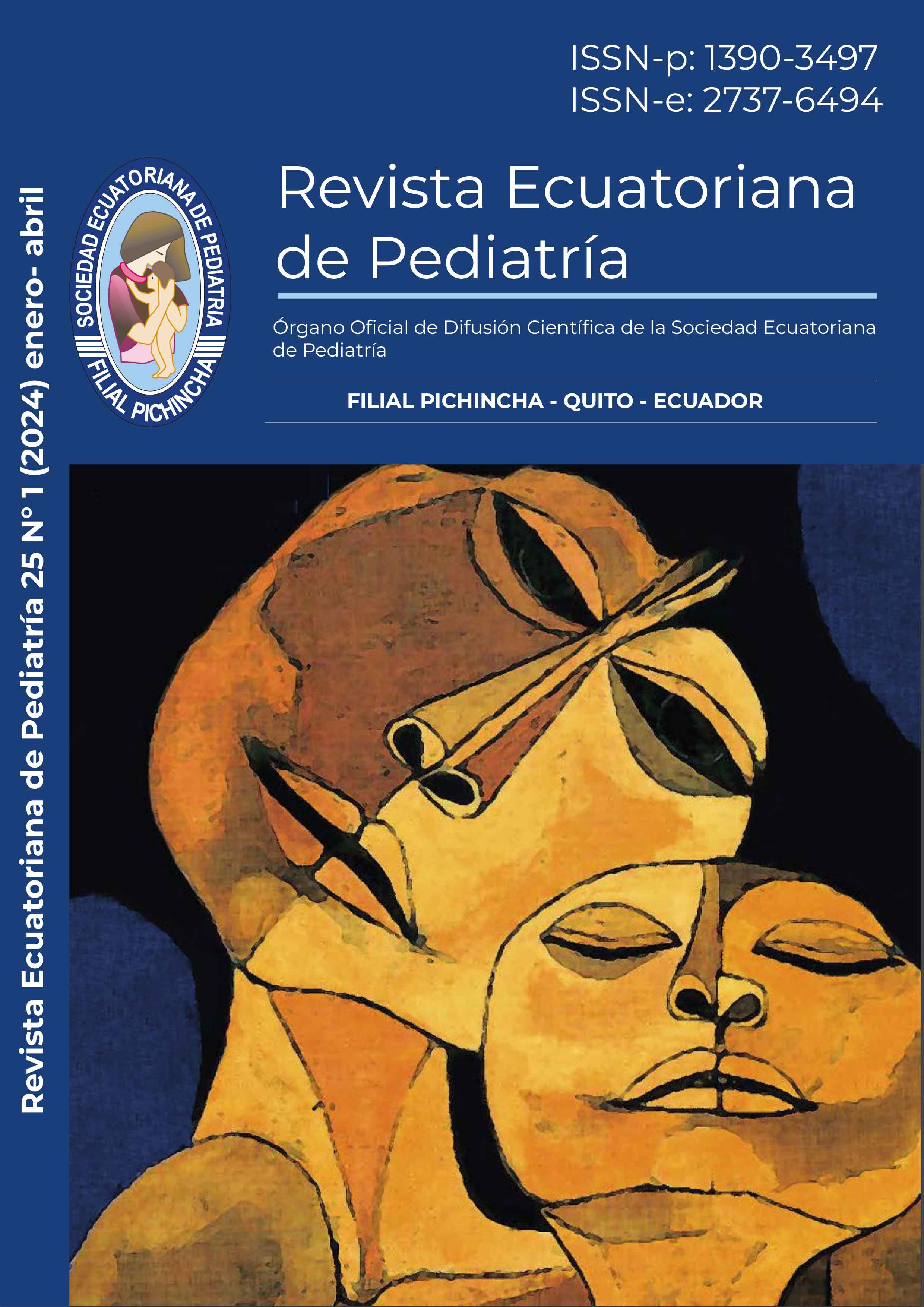Anthropometric Indicators of HIV-Positive newborns at the Hospital of Guayaquil
Main Article Content
Abstract
The present scientific article analyzes the prevalence and characteristics of HIV in newborns whose mothers did not receive antiretroviral treatment during pregnancy. It was found that most of these cases correspond to mothers without records of HIV tests or with negative results during pregnancy. HIV diagnosis in children is generally delayed, with the majority being in good health and a minority suffering from malnutrition. Vertical transmission of HIV, from mother to child, is one of the main causes of pediatric infection. The study reveals that 75% of children with pediatric AIDS are born to HIV-positive mothers, especially in developing countries. The study at the hospital in Guayaquil analyzed 41 newborns with HIV and 41 controls, matched by maternal age. Specific patterns were observed in the distribution by blood group and results of HIV and VDRL tests. The analysis showed that HIV-reactive newborns had poorer health indicators at birth, such as lower Apgar scores and smaller head, chest, and abdominal circumferences. The detailed comparison of anthropometric characteristics through percentiles indicated that non-reactive newborns had better overall measurements, although with high variability. Reactive newborns presented lower percentiles, especially in abdominal circumference. The prevalence of low birth weight (LBW) was significantly higher among HIV+ mothers compared to HIV- mothers. Factors such as low CD4 count, mid-upper arm circumference (MUAC) <23 cm, and gestational age <37 weeks were determinants of LBW among HIV+ mothers. It is recommended to improve the nutritional status of HIV+ mothers and delay pregnancy until their immune status improves. Healthcare providers should focus on nutritional counseling during prenatal care and the prevention of mother-to-child transmission of HIV.
Downloads
Article Details

This work is licensed under a Creative Commons Attribution-NonCommercial-ShareAlike 4.0 International License.
References
Velásquez-Vásquez Carlos, Espinola-Sánchez Marcos. Caracterización de niños con VIH por transmisión materno-infantil atendidos en hospitales de Lima, Perú. Rev. perú. med. exp. salud publica [Internet]. 2020 Oct; 37(4): 694-699. Disponible en: http://www.scielo.org.pe/scielo.php?script=sci_arttext&pid=S1726-46342020000400694&lng=es. Epub 05-Nov-2020. http://dx.doi.org/10.17843/rpmesp.2020.374.4816.
Villalobos Noren. Características de la transmisión perinatal del virus de la inmunodeficiencia humana en la región zuliana. Rev Obstet Ginecol Venez [Internet]. 2002 Sep; 62(3): 175-188. Disponible en: http://ve.scielo.org/scielo.php?script=sci_arttext&pid=S0048-77322002000300003&lng=es.
Shaffer N, Chuachoowong R, Mock PA, Bhadrakom C, Siriwasin W, Young NL, Chotpitayasunondh T, Chearskul S, Roongpisuthipong A, Chinayon P, Karon J, Mastro TD, Simonds RJ. Short-course zidovudine for perinatal HIV-1 transmission in Bangkok, Thailand: a randomised controlled trial. Bangkok Collaborative Perinatal HIV Transmission Study Group. Lancet. 1999 Mar 6;353(9155):773-80. doi: 10.1016/s0140-6736(98)10411-7. PMID: 10459957.
Álvarez-Carrasco R, Espinola-Sánchez M, Ángulo-Méndez F, Cortez-Carbonell L, Limay-Ríos A. Perfil de incidencia de VIH en embarazadas atendidas en el Instituto Nacional Materno Perinatal de Lima, Perú. Ginecol Obstet Mex [Internet]. 2018;86(2):108–16. Disponible en: http://www.scielo.org.mx/scielo.php?script=sci_arttext&pid=S0300-90412018000200004&lng=es
World Health Organization. HIV assays: operational characteristics (Phase 1): report 15 antigen/antibody ELISAs [Internet]. Ginebra; 2004. Disponible en: https://iris.who.int/bitstream/handle/10665/43059/9241592370.pdf
Loyola Francisca, Ramírez Allison, Varas Almendra. El embarazo y los efectos que produce en la salud de las mujeres VIH positivas. Rev. chil. obstet. ginecol. [Internet]. 2021 Dic; 86(6): 554-562. Disponible en: http://www.scielo.cl/scielo.php?script=sci_arttext&pid=S0717-75262021000600554&lng=es. http://dx.doi.org/10.24875/rechog.m21000035.
Labourdette,V; Leiva, R; Morande, R; Zapata, J. Sociedad Argentina de Pediatría. Guía para la Evaluación del Crecimiento Físico. Sociedad Argentina de Pediatría; 2013
L.E, Miguel. Somatometría para la evaluación médica del recién nacido. Nación Farma. 27 febrero 2020. Disponible en: https://nacionfarma.com/somatometria-evaluacion-medica-recien-nacido/
Montiel N. Manual de procedimientos de atención de enfermería al recién nacido. Centro de excelencia medica de altura by FIFA. 2016. Disponible en: https://www.cufcd.edu.mx/calidad/v20/documentacion/CM/CEMA-MN-E-5.pdf
Jasso L. Neonatología práctica. 4ª ed, El Manual Moderno, México. 1995; 78–84.
Juez G, Lucero I, Ventura-Juncá P, et al. Talla, circunferencia craneana e índice ponderal en recién nacidos chilenos de clase media. Rev Chil Pediatr. 1993; 64 (2): 237-240
Manzini JL. Declaración de helsinki: Principios éticos para la investigación médica sobre sujetos humanos. Acta bioethica.2000; 6(2):321-34

